View from the Hill 11th May 2020
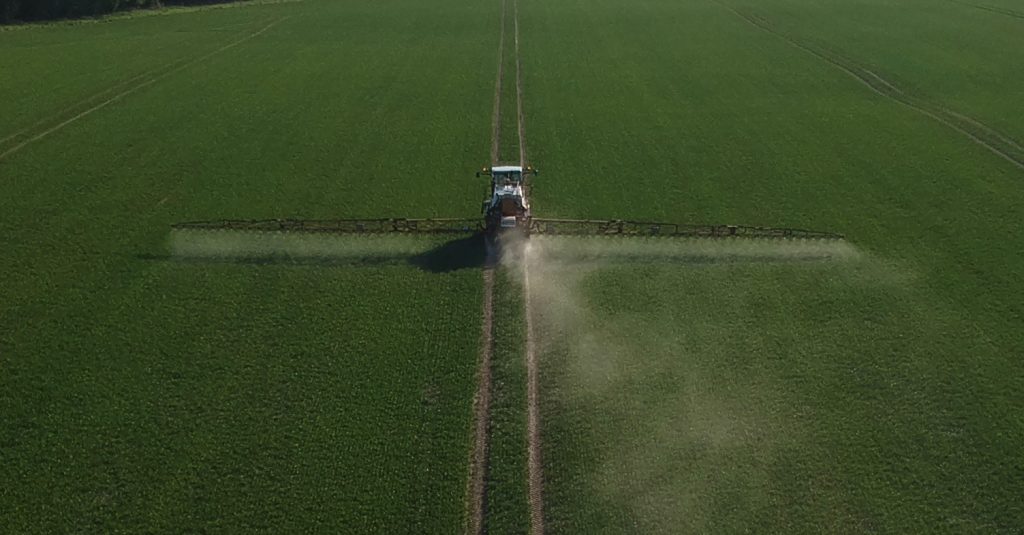
It comes to something when the apparent drift from the sprayer is actually dust thrown up by its wheels in the tramlines. Most of April was so dry that this was a common occurrence for early season fertiliser and spray applications. It is a good demonstration of the low drift nozzles on our sprayer. We try hard to avoid drift, by keeping water pressure low, by keeping the boom close to the target crop, by not driving too fast or operating in strong wind, and by using nozzles which admit a small amount of air just ahead of the spray nozzle orifice, which has the effect of reducing the number of tiny drift-susceptible droplets. Drift can damage neighbouring crops, alarm spectators, and waste spray. In all truth, although highly visible, the droplets in any drift represent a tiny proportion of the total spray volume, usually 100 litres per hectare, but is down to responsible operators to keep it to as little as possible. On this occasion we were applying a fungicide to keep diseases like septoria and rust at bay. This spring the dry weather has not favoured the usual disease culprits, and has enabled us to rein back on application rates, although it would be a brave person to not spray anything at all and leave our lovely young wheat plants unprotected from whatever the wind blows in. A drawback of the modern chemistry that we use to keep our crops healthy is that most of it is protective, rather than curative, meaning that for it to be effective, you need to apply it before a disease strikes, once the disease becomes visible on the plant leaf you need curative action, and there is precious little of this available. Either the chemicals have been withdrawn from the market, or the diseases have mutated and rendered the spray chemical ineffective.
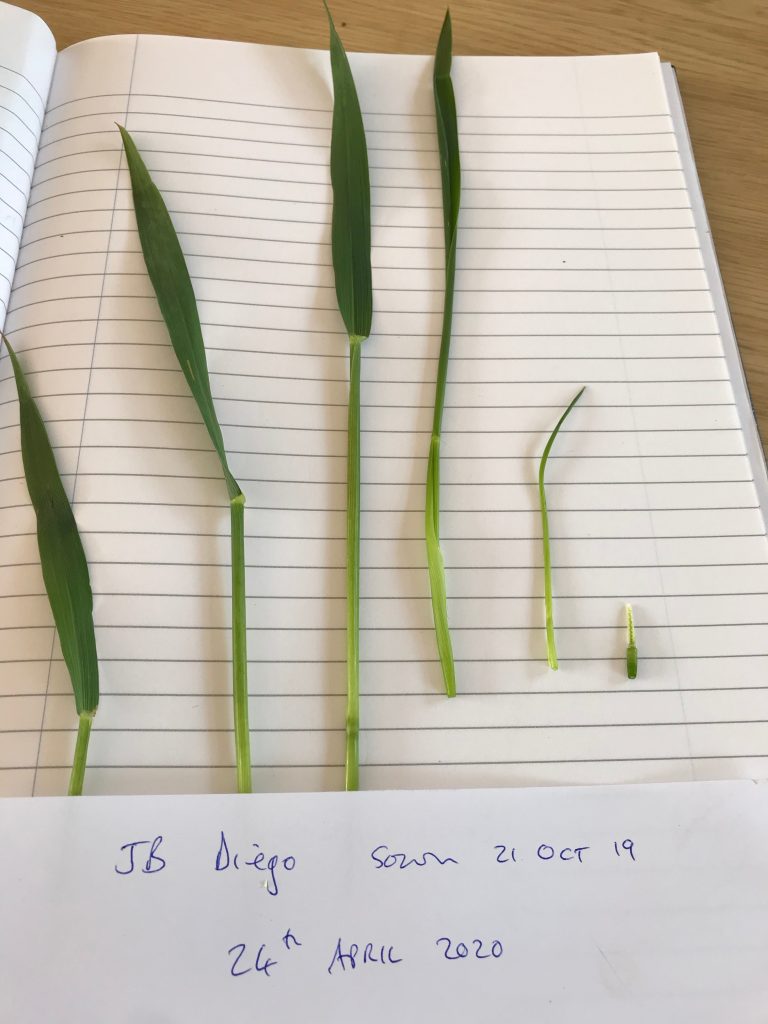
This dissected wheat plant shows which leaves have emerged, and guide us to the best spray timing. The tiny piece on the right is the developing ear.
All this means that we have to pay great attention to weather conditions, to past performance of various chemicals and crop varieties in similar conditions, and we usually mix chemicals with different modes of action, in order to try to prevent resistance developing. This seems to resonate with the Covid problem, one vaccine may not be enough to stop it in its tracks, so we have to use a number of different methods to reduce its threat. With crops we use mixtures of different chemicals, we try to apply at the best possible timing, we try to make sure the plants are well fed and healthy in other respects, and we use different varieties, with different susceptibility to diseases, in different areas of the farm. There is, for example, a variety diversification table we use when planning against yellow rust in wheat. We also make sure that our application kit is fit for purpose, and that we have adequate supplies of the chemical for when we might need it.
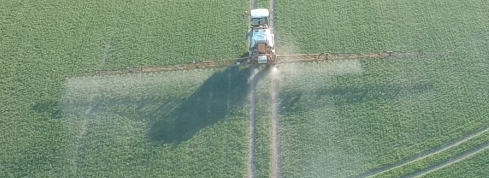
Our sprayer is guided by GPS, and the nozzles are controlled automatically only to open when the machine knows that they are positioned over unsprayed ground, this avoids overdosing, possible damage to the crop, and wasting spray or fertiliser. This short youtube film shows the auto system working very clearly https://www.youtube.com/watch?v=TKKN770u4vM
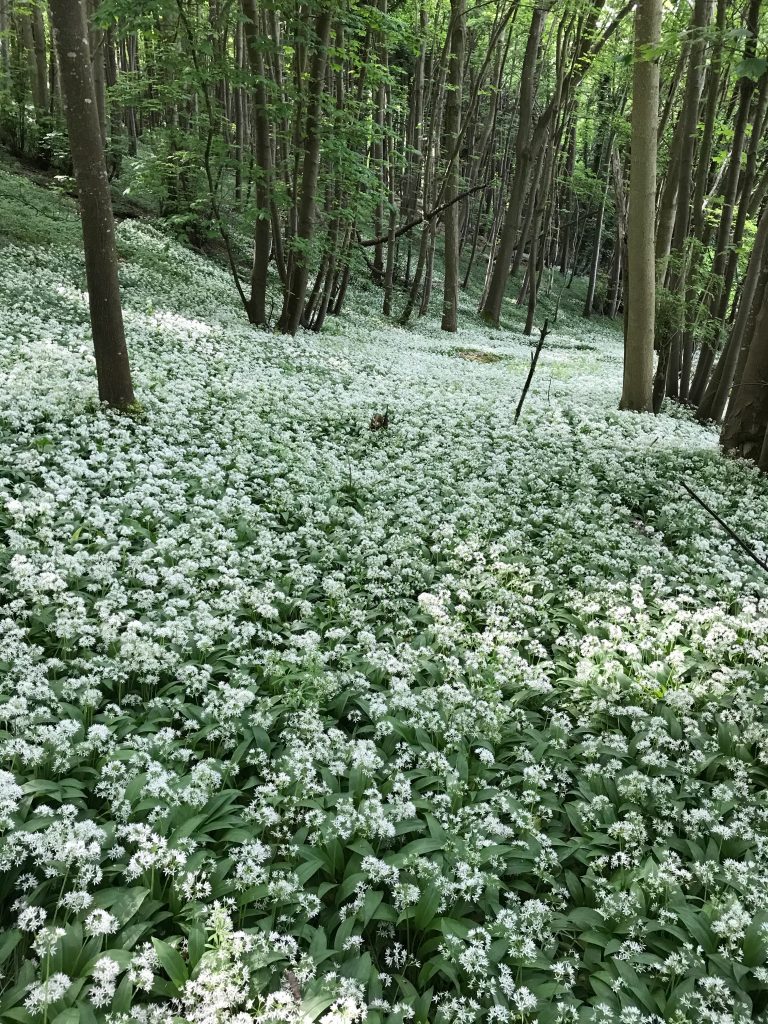
This has been a spectacular spring for wild flowers, here is a fresh snowfall of wild garlic in 4 acre wood near Knighton House, this beautiful white carpet stretches from almost one end to the other, and after walking carefully through some of it, one’s boots and socks smell like something else, not the customary cheese at any rate. The garlic was right at the peak of its beauty this weekend, and in less than a month will be a shrivelled and brown remnant, rapidly returning to the soil. Another seasonal miracle in the woodland is of course the bluebell, if the forest floor is not white, then very often it is blue, dotted with pinpricks of white in the form of wood anemone, greater stitchwort or sweet woodruff. Don’t these names just make you want to rush off to the woods and soak them up? There are apps you can get on your phone which enable instant recognition, and help you to learn the names of these beauties.
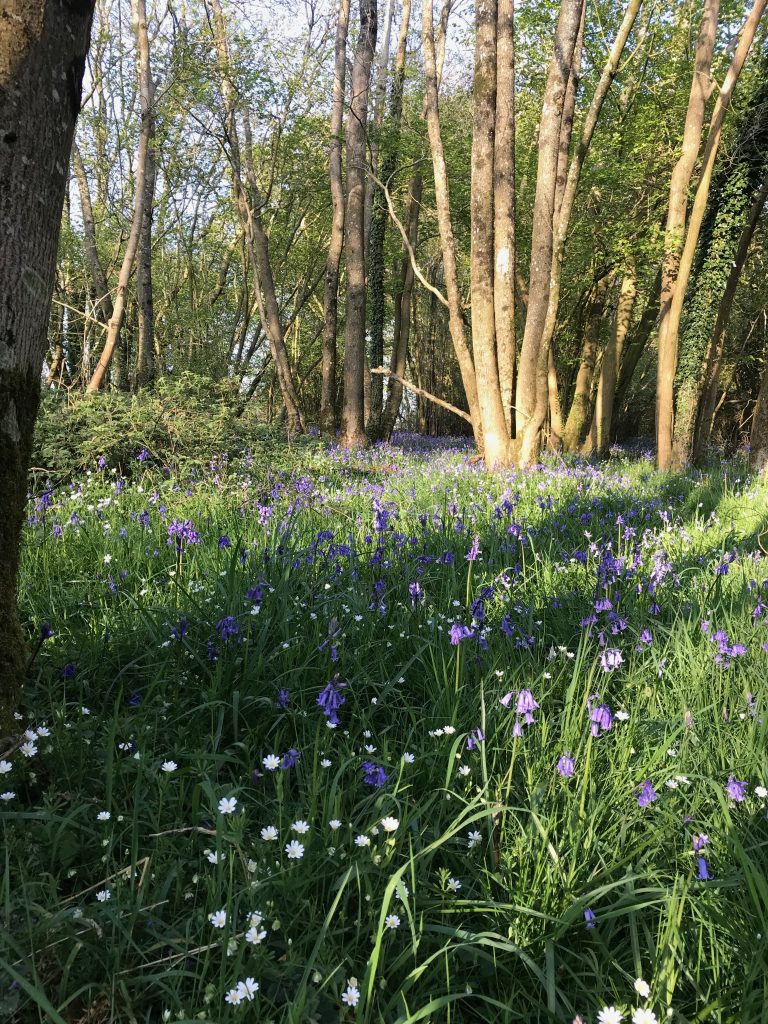
There has been a group of cows and calves in Wynchard for most of the time since turnout in mid April, which was done in a bit of a rush as the weather improved, we had only managed an emergency water supply, and no extra fencing. Eventually we found time to install new swimming pool-sized troughs, and erect enough fence to divide the field into 8 paddocks to aid management of the grass. The cows have had a first bite and seem to approve of the mixture of herbs in the mix.
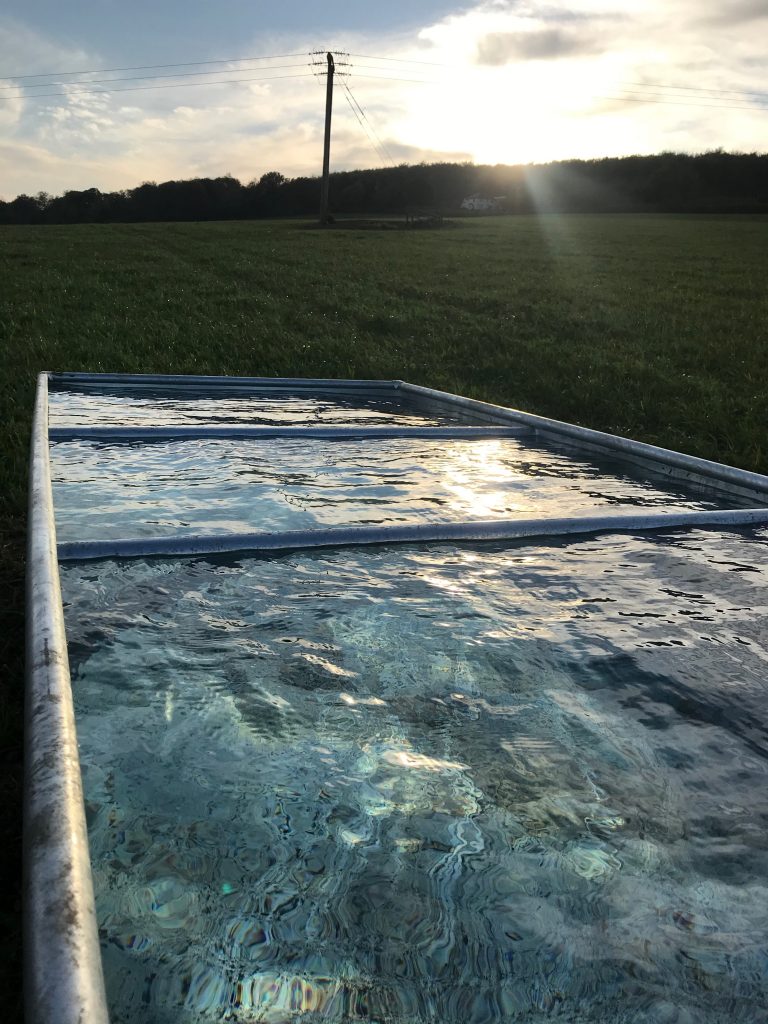
Vetches, clover and plantain are already prominent, with Lucerne, chicory and sainfoin not far behind. The intention is that the nitrogen fixing elements will supply the grasses with food, and the whole combines to provide a healthy and tasty diet for the animals.
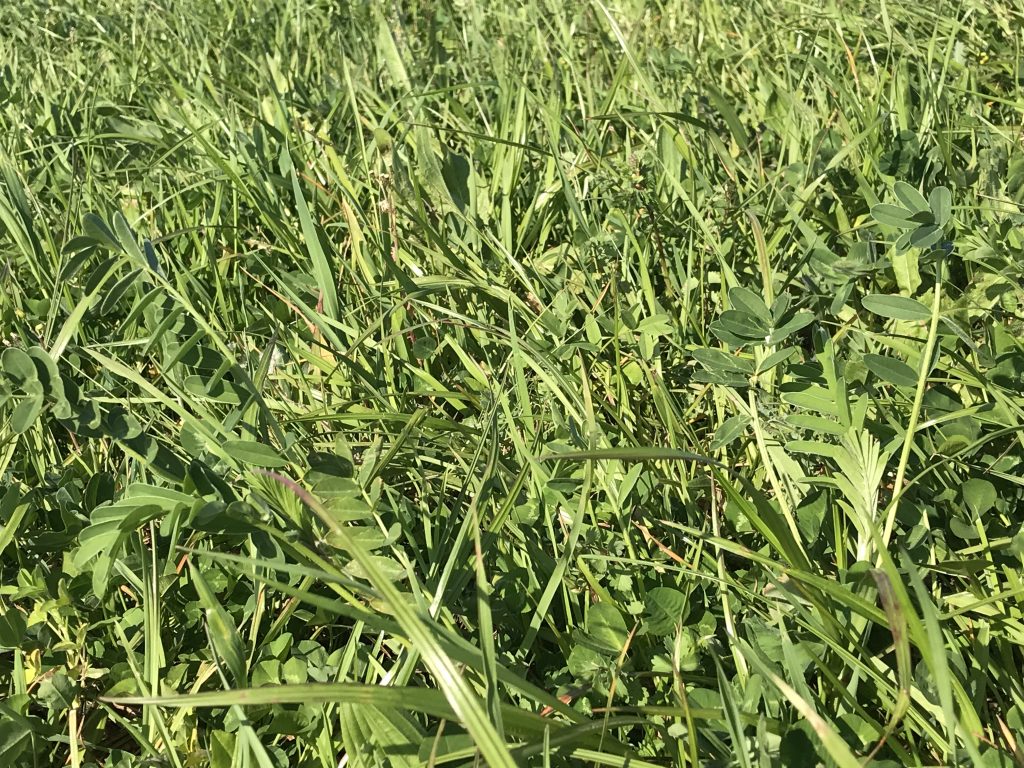
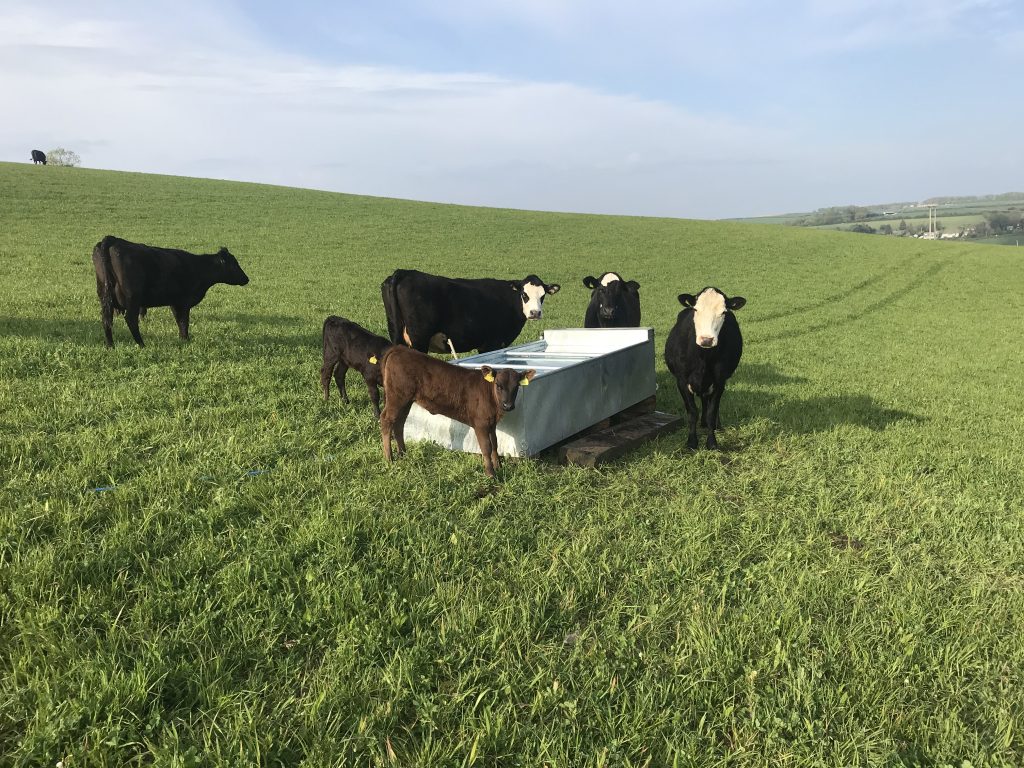
Elsewhere on the farm, we are having our first stab at growing beans for 10 years or so, the leaves of all the plants are showing evidence of grazing by the pea and bean weevil, how does it get around so quickly with its pinking shears ? We are assured that its larvae are having the same effect on the roots.
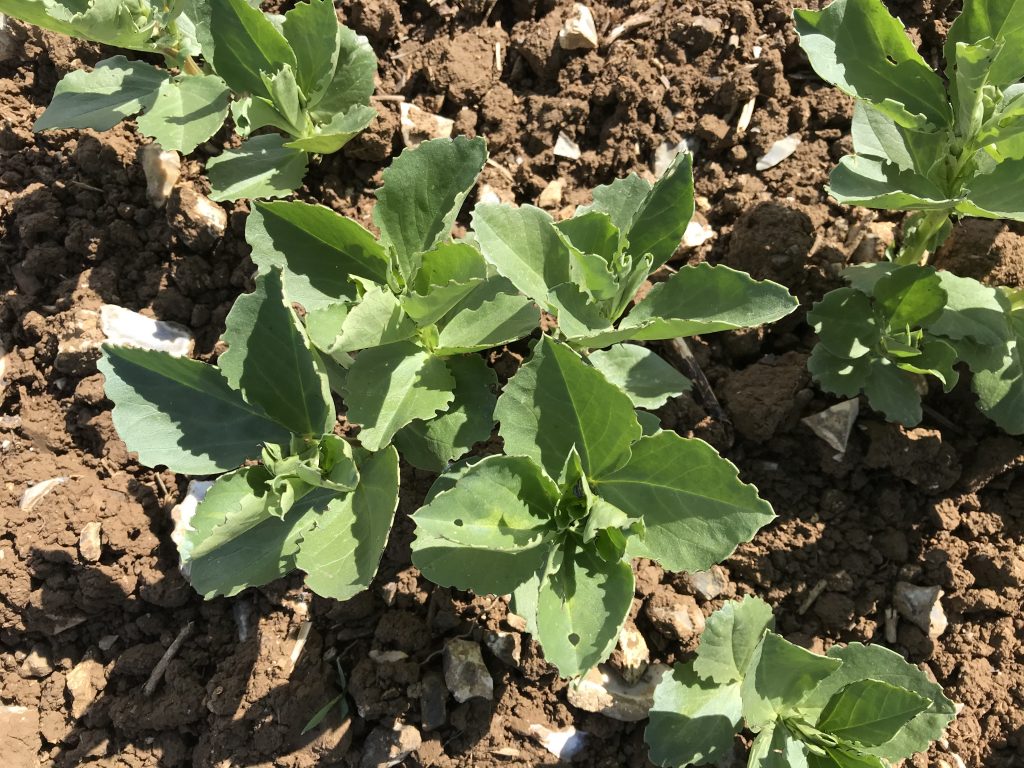
In a rash moment in March, we decided to leave a 6 acre part of an over-wintered cover crop growing in a field which should have been sown to poppies, with the idea of harvesting it for the seed, to use in sowing next year’s cover crops, saving a few bob. Well right now it is a delight, all the constituents are flowering, and the bees are loving it. Phacelia, white linseed, vetches and crimson clover are all claiming attention with pretty blooms. A friend in the seed trade tells me we might have a bit of a caper harvesting it, akin to trying to combine a mattress.
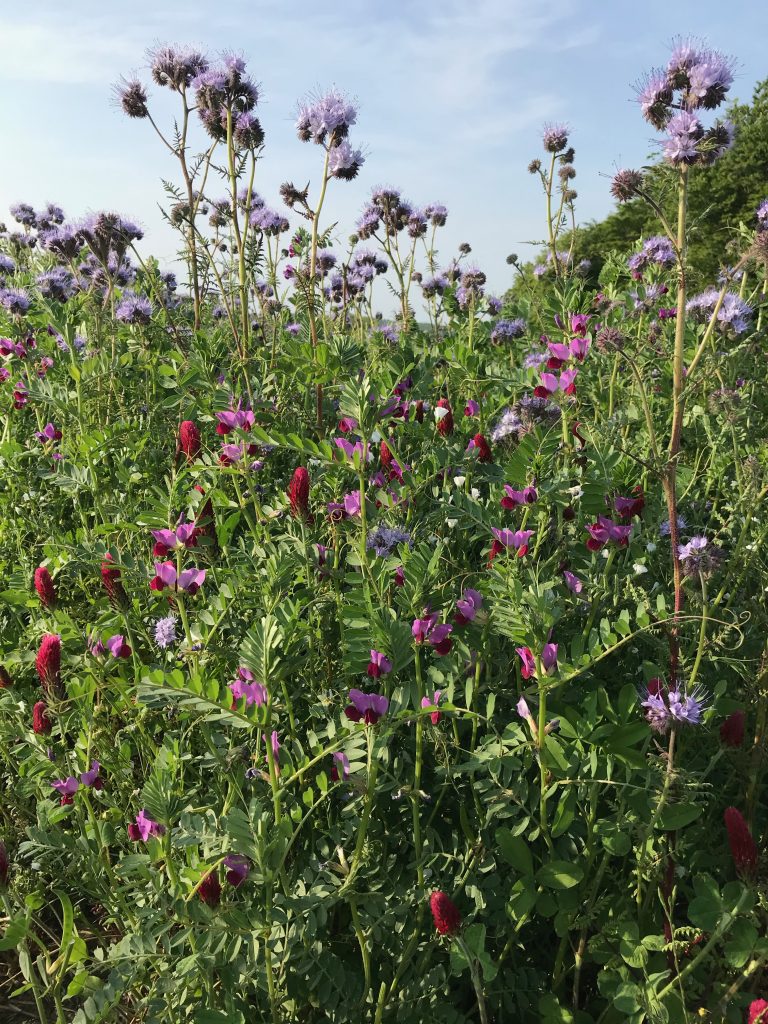
And who knew that the anthers of the white linseed flower were blue? I certainly didn’t until the day I took the picture.
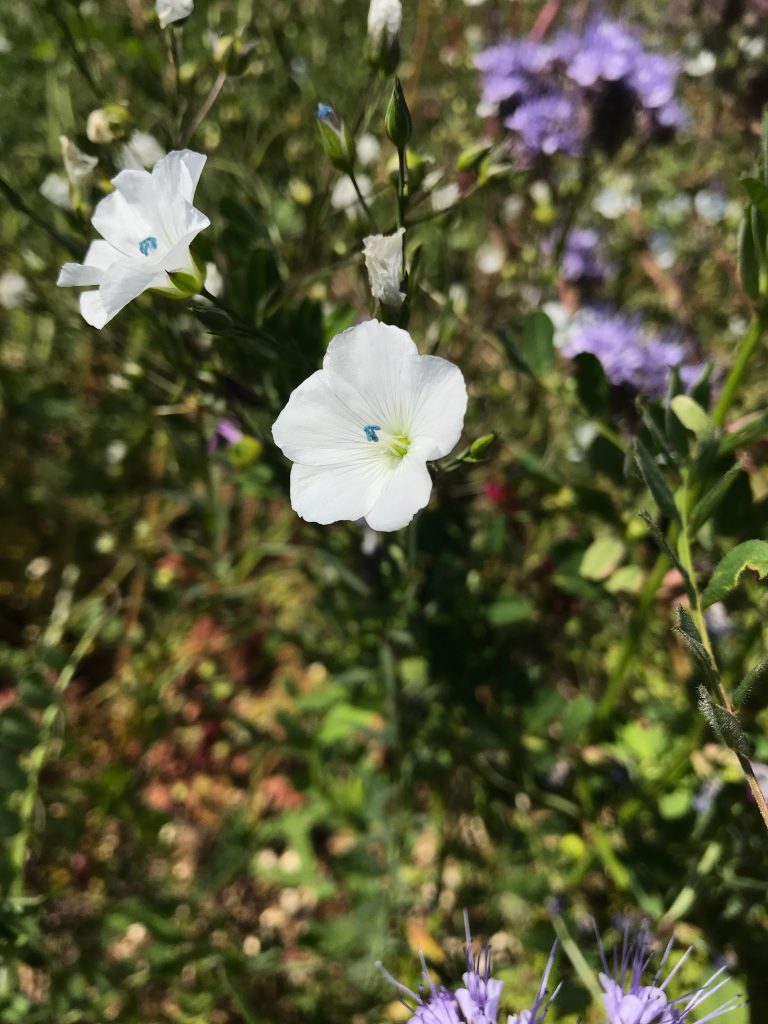
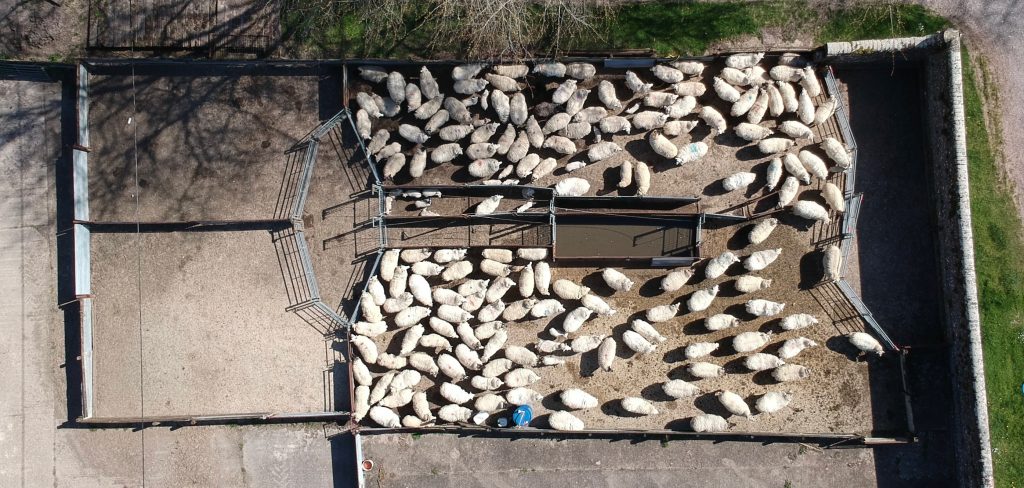
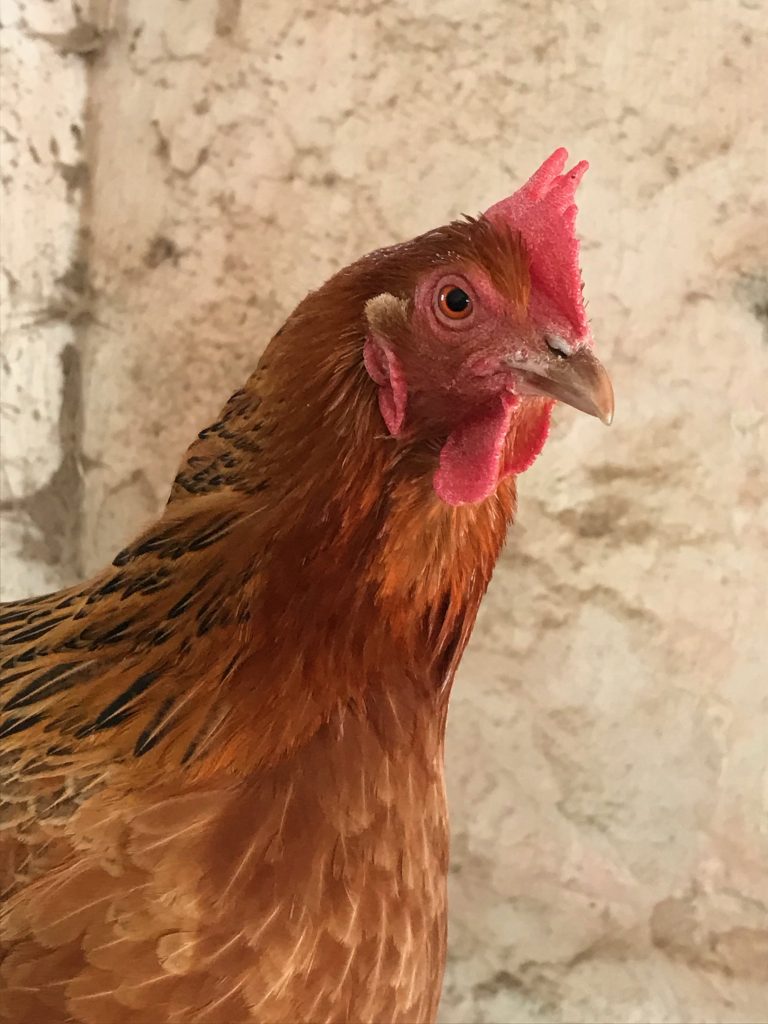
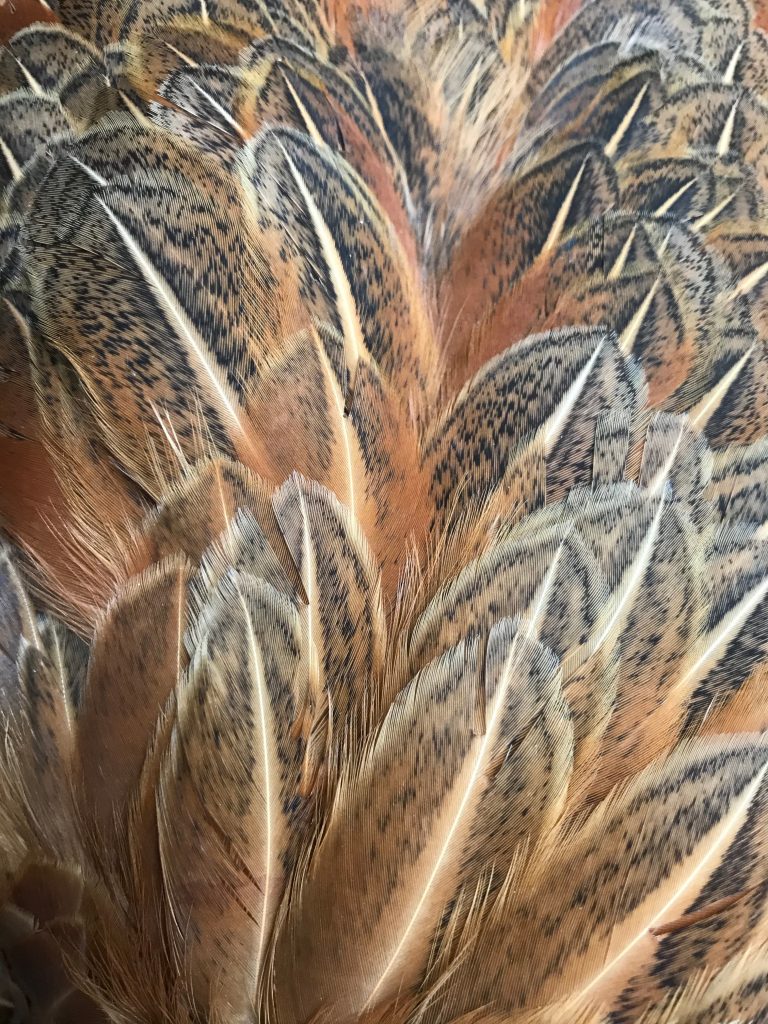
Our two newest additions moved in last week, at 9 weeks old: they get greedier by the day, and are growing fast. More on these fellows next month, though our venture into pig keeping could get me into trouble with my professional pig farmer colleagues.
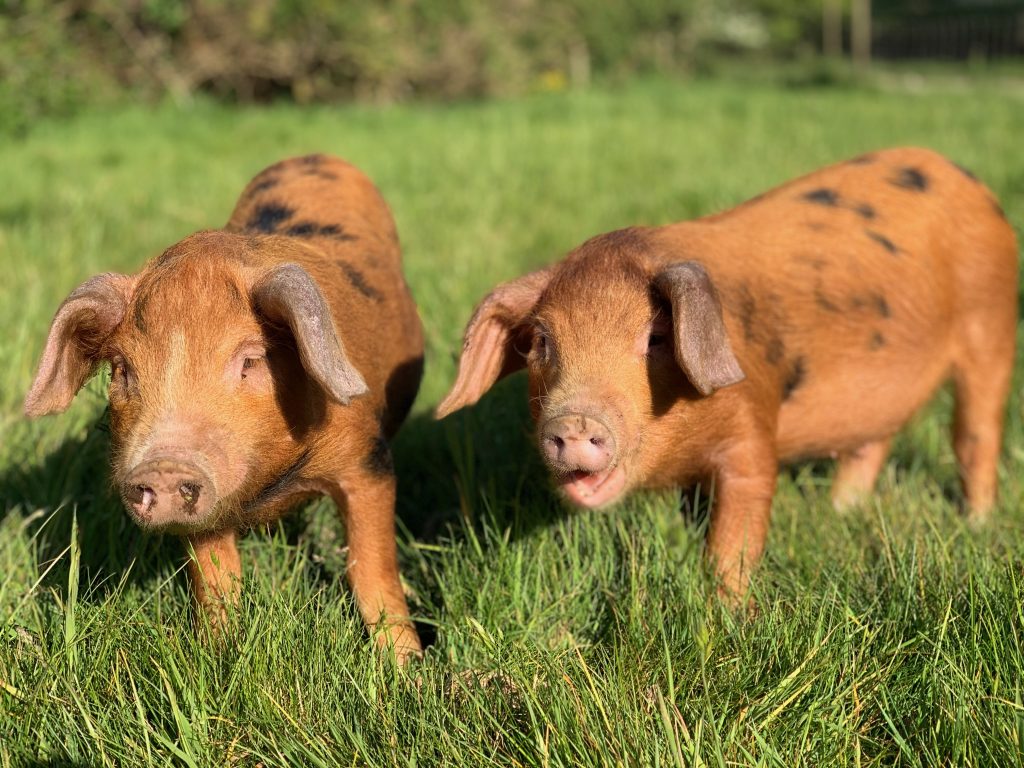

Another excellent report, thank you
Don’t name the pigs if they are going in your freezer. They may get a bit fat later, restrict the hard feed a bit when they are bigger, no one likes bacon with 2 inches of fat although it will be very tasty.
I’ve become addicted to view from the hill. How do you find time George?
Your articles get more beautiful by the month. When will the sprayer be replaced by full organic conversion ?
This is a stunning edition of the View George – so much respect for your spraying strategies and fine attention to detail to reduce wastage and ensure minimal environmental and human impacts, and I can smell the garlic from here! Are the pigs Tamworths?